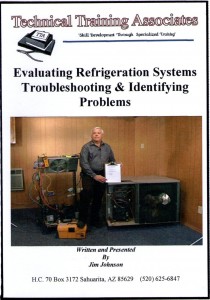
Leased properties can save money and labor by installing and arranging wireless controls to meet new tenants’ needs.
Accurate temperature sensing is a prerequisite for satisfying tenant/owner expectations for comfort control, and sensor location is critical to accurately measure temperature. Installation difficulties can make sensor placement difficult; compromising project cost, timing, and quality.
Today, wireless technology is evolving rapidly. Past concerns regarding reliability, battery life, and cost have improved to the point where wireless is a practical alternative to traditional sensors in common applications. As a result, many new wireless zone sensors are now available. According to Frost & Sullivan market data, wireless sensor volume will approach that of wired by the end of this year.
Among the most beneficial uses of wireless zone sensors is in retrofit applications. Wireless solves many initial installation difficulties and allows easy, low-cost relocation when the space is reconfigured.
PROBLEMS WIRELESS ADDRESSES
Wireless can overcome three common problems: changing floor plans, challenging architecture, and high-risk projects.• Changing floor plans - Leased properties, offices, retail spaces, and other properties where floor plans are frequently moved require pulling new wire to, and re-terminating wire at, the desired location. With wireless, this project labor time and cost is eliminated.
Perhaps the most obvious situation where wireless sensors solve a problem is when sensors need to be moved. Copy machines, refrigerators, and other common equipment and appliances can cause inaccurate sensing. Initial placement may not accurately measure the space. Wireless enables flexibility to relocate a sensor with minimal effort and cost.
• Challenging architecture - A building’s architecture and structure can pose wiring challenges for a number of reasons. Stone, brick, or glass walls and atriums are examples of this. “Cube farms” with large open areas or panels limiting airflow for wall-mounted sensors can be problematic. In some buildings, restrictions involving historical preservation prevent wiring.
• High-risk projects - Tight deadlines and unanticipated surprises in building retrofits can cost overruns and missed project deadlines. With wireless sensors, hidden or unknown construction materials or asbestos may not need to be penetrated or removed. Installing sensors at building startup and very near the point of occupancy is feasible with wireless. This can meet deadlines and minimize construction and painting damage.
A WIRELESS FUTURE?
With a rapid adoption curve and resulting economies of scale, the cost of wireless solutions for building automation systems, including sensors, is expected to continue to decline. At the same time, investment in new wireless developments is high. The industry is investing in solutions that make integration easy. In addition, interoperable solutions like ZigBee™ wireless protocols and power-harvesting promise to bring open, interoperable, and battery-free wireless solutions in the not-so-distant future.As a result, wireless zone sensors are a viable alternative to wired sensors in retrofit applications today. With the installation and control advantages, wireless may become the expected solution in retrofit applications in the near future. A building staff or team should request the HVAC or controls supplier to propose a wireless option. Since wireless is approaching parity with wired on total installed cost, contractors, specifiers, and estimators should consider and evaluate wireless as an alternative if there is the slightest indication for use - both retrofit applications and in new construction.
Sidebar: When to Cut the Cord
Here is a checklist on when to consider wireless in retrofit projects:• Difficult construction materials - stone, brick, glass, or concrete block.
• Historic properties - with preservation restrictions.
• Atriums - where wiring is unfeasible.
• High construction costs -markets with notably high labor rates and stringent code requirements.
• High churn properties -spaces that undergo frequent reconfiguration, or renovations such as leased properties, offices, and retail space.
• Precise temperature control properties -where occupant comfort or high-precision processes is critical to occupant comfort or product quality. (With wireless, optimal sensor placement is significantly easier to achieve.)
• Fast-track projects -projects encountering occupancy deadline pressure.
Publication date:12/08/2008




